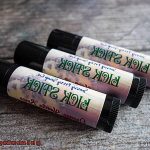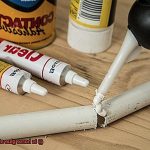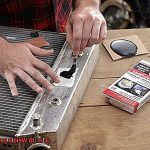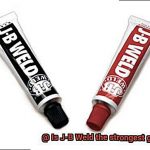Forget what you thought you knew about hot glue. This sticky wonder isn’t just for arts and crafts – it’s got some serious electrical mojo too. Get ready to have your mind blown as we dive into the fascinating world of hot glue’s conductivity. Is it a conductor? An insulator? Or maybe a little bit of both? Hold on tight as we unravel the science behind this versatile adhesive’s shocking secrets.
Hot glue, that magical thermoplastic adhesive we all know and love, is a go-to for its versatility, affordability, and sheer ease of use. But when it comes to electrical conductivity, things get interesting. While hot glue is primarily made up of polymers that typically act as insulators, there’s more to this story than meets the eye.
At its core, hot glue can definitely be considered an insulator. Insulators are like the bouncers at an exclusive club – they keep electricity from getting in or out. Hot glue’s molecular structure puts a damper on electron movement, effectively blocking the flow of electric current.
But wait. There’s a twist. Under certain circumstances, hot glue can show off some limited conductivity skills. How? By adding conductive particles or impurities like metal flakes or graphite into the mix. Suddenly, our humble hot glue gains the power to conduct electricity – though not nearly as well as traditional conductors.
The thickness and application technique of hot glue also play a role in its electrical properties. A thick layer spread evenly acts as an impenetrable insulating fortress. On the other hand, a thin or unevenly applied layer might leave tiny gaps that allow some electric juice to flow through.
Understanding these electrical quirks is essential for DIY enthusiasts and hobbyists who rely on hot glue for their electrifying projects. Knowing whether it acts as a conductor, an insulator, or something in between can save you from shocking surprises and prevent unintentional electrical disasters.
So why does it matter? Well, being able to use hot glue as a trusty insulating material comes in handy when you need to protect exposed wires, avoid short circuits, or just keep things safe and sound during temporary repairs. And if you’re feeling adventurous, tapping into its limited conductivity opens up a world of creative possibilities – think simple circuits and prototyping boards.
What is Hot Glue?
Contents
This adhesive gets its name from the fact that it is applied in a molten state and solidifies as it cools down, making it perfect for projects that require immediate adhesion.
At its core, hot glue is made from thermoplastic polymers, with the main component being ethylene-vinyl acetate (EVA). This synthetic polymer has a low melting point, allowing it to quickly melt when heated. To enhance its performance, other additives such as tackifiers, antioxidants, and stabilizers may also be incorporated.
Using hot glue is a breeze. Cylindrical sticks or pellets are loaded into a glue gun, which features a heating element and a trigger mechanism. When the trigger is squeezed, the molten glue is forced out through a nozzle, enabling precise application onto the desired surface.
One of the most captivating features of hot glue is its rapid setting time. Within seconds of being applied, it cools down and solidifies. This quick bonding time makes hot glue a perfect choice for projects that demand immediate results.
Hot glue excels in its adhesion properties and can bond an extensive range of materials including fabric, wood, metal, plastic, and ceramics. It forms a robust bond capable of withstanding moderate stress and strain. However, it’s worth noting that the bond strength may vary depending on the specific materials being joined.
When it comes to electrical conductivity, hot glue leans towards being an insulator rather than a conductor. Its primary component, EVA polymer, boasts high electrical resistance and restricts the flow of electric current. This insulating property makes hot glue ideal for applications requiring electrical insulation or heat insulation.
Understanding Conductors and Insulators
In the world of adhesives, hot glue is like a superhero, swooping in to save the day with its molten state and quick-setting power. But did you know that hot glue also has a secret identity as an insulator? In this blog post, we will delve into the captivating realm of conductors and insulators, exploring their differences and discovering how hot glue fits into the electrifying equation.
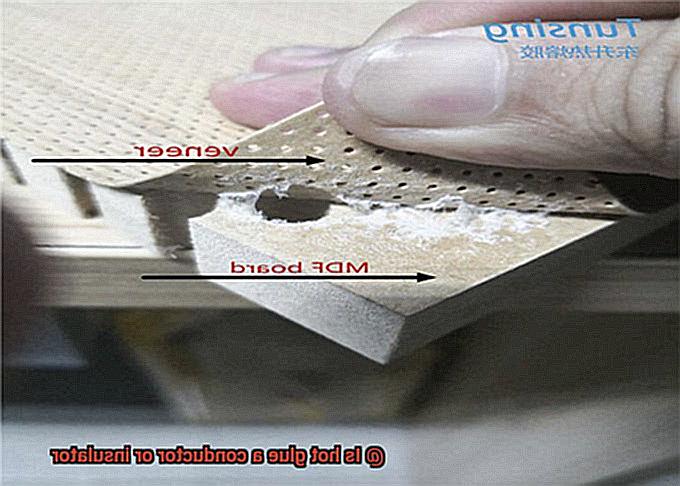
Conductors vs. Insulators:
To truly understand the enigmatic world of conductors and insulators, we must first comprehend their divergent natures. Conductors are materials that possess the extraordinary ability to allow electric current to flow through them with ease. This wonder is made possible by their loosely bound electrons that dance freely throughout the material. In contrast, insulators have tightly bound electrons that steadfastly resist the flow of electric current, like loyal sentinels guarding their post.
Hot Glue as an Insulator:
Now let’s shine a spotlight on hot glue, our adhesive superhero. Crafted from thermoplastic polymers, hot glue possesses a unique characteristic – a relatively low melting point. When heat is applied, it melts and transforms into a fluid state that can be effortlessly molded to fit any crevice or surface. As it cools down and solidifies, it forms an unbreakable bond that can withstand the test of time. This incredible adhesive prowess makes hot glue the perfect companion for joining a myriad of materials together, including fabric, wood, metal, plastic, and ceramics.
However, when it comes to electrical conductivity, hot glue takes on the mantle of an insulator rather than a conductor. Its ethylene-vinyl acetate (EVA) polymer core boasts high electrical resistance, effectively blocking the flow of electric current. This superpower of insulation makes hot glue an invaluable asset for applications requiring electrical or heat insulation.
Applications of Hot Glue as an Insulator:
Harnessing its ability to solidify into a structure with tightly bound electrons, hot glue becomes an invaluable tool for insulating electrical components and preventing disastrous short circuits. It can be skillfully employed to secure wires, cover exposed connections, and provide a protective layer around delicate electronic parts.
However, it is crucial to note that the conductivity or insulation properties of hot glue can vary depending on its composition and additives. Some formulations may contain conductive particles or additives that alter its electrical behavior. For scenarios where a degree of conductivity is desired, certain types of conductive hot glue have been developed to meet these specific needs.
Is Hot Glue a Conductor or Insulator?
Hot glue, the versatile adhesive that holds our crafts and DIY projects together, is a hero in its own right. But did you know that it also has a secret power? Hot glue is not just an adhesive but also an insulator, protecting against the flow of electric current like a loyal sentinel guarding its post. So, if you’re wondering whether hot glue is a conductor or insulator, let me shed some light on this electrifying topic.
To understand whether hot glue conducts or insulates electricity, we need to delve into the properties of conductors and insulators. Conductors are materials that allow electric current to flow through them easily. They typically have free electrons that can move around, facilitating the flow of electricity. Insulators, on the other hand, are materials that do not conduct electricity. They have tightly bound electrons that do not move easily, preventing the flow of electric current.
Hot glue is primarily composed of thermoplastic polymers, which are well-known insulators. Thermoplastics are materials that soften when heated and harden when cooled, making them perfect for hot glue applications. The tightly bound electrons in hot glue prevent the movement of electric current, effectively insulating against short circuits and electric shocks.
But why is this important? Well, imagine you’re working on an electrical project and need to secure wires or delicate components together. Using a conductor as an adhesive could lead to disastrous consequences like short circuits or even electrical fires. But with hot glue’s insulating properties, you can safely join materials without worrying about unwanted currents flowing where they shouldn’t.
Hot glue’s ability to solidify into a structure with tightly bound electrons makes it an invaluable tool for insulating electrical components. Whether you’re crafting a circuit board or creating a decorative lighting fixture, hot glue can serve as your trusty sidekick, ensuring safety and preventing electrical mishaps.
Hot Glue in its Solid State
Hot glue, the unsung superhero of the crafting world. Its ability to stick things together is well-known, but did you know it possesses another hidden power? When hot glue solidifies, it becomes an insulator, acting like a protective shield against the flow of electricity. It’s like having a trusty sidekick that keeps you safe from electrifying mishaps.
So, why does hot glue transform into an insulator when it solidifies? It all comes down to its composition. Hot glue is made up of thermoplastic polymers, such as ethylene-vinyl acetate or polyethylene. These polymers have tightly bound electrons that stubbornly resist the flow of electrical current. They act as little electron bodyguards, preventing any unwanted shocks or short circuits.
This property of hot glue in its solid state has significant implications for crafters and DIY enthusiasts. When we use hot glue in our projects, we can feel confident that it won’t interfere with any electrical components or circuits. It provides a reliable barrier, ensuring safety and peace of mind.
However, it’s important to exercise caution when using hot glue around electrical components. Although hot glue is an insulator, if it melts or comes into contact with live wires or conductive surfaces, it can still cause problems. So let’s be smart and keep our trusty sidekick, hot glue, away from anything that could cause trouble.
Hot Glue in its Molten State
Hot glue, that wondrous substance capable of fixing nearly anything, has a secret talent – it can protect you from the dangerous realm of electricity. But have you ever pondered the enigma of why hot glue, in its molten state, refuses to conduct electricity? Prepare yourself for a captivating journey into the mesmerizing world of hot glue as we unravel the intricate factors that determine its role as either a conductor or an insulator.
First and foremost, let us delve into the composition of hot glue. This magical concoction consists of thermoplastic polymers like ethylene-vinyl acetate or polyamide, boasting low melting points. Once subjected to heat, these polymers undergo a metamorphosis, transforming from solid sticks into a molten liquid that can be effortlessly applied to surfaces. However, what happens to its electrical conductivity during this transformation?
One critical factor lies in the addition of conductive materials within the hot glue formulation. Certain hot glues incorporate substances like carbon or metal particles, heightening their electrical conductivity. These additives enable the molten hot glue to conduct electricity, providing a pathway for the flow of electrons.
Nevertheless, not all hot glues are created equal. Many commonplace hot glues lack these conductive additives and instead act as insulators when molten. These insulating hot glues repel the flow of electrical current, effectively isolating any potential shocks or sparks.
Another vital influence is thermal conductivity, which measures a material’s ability to transfer heat. Hot glue possesses relatively low thermal conductivity, meaning it does not readily transmit heat from one point to another. This characteristic proves advantageous in situations where heat insulation is desired.
Now, let us embark on an exploration of hypothetical scenarios to elucidate how these factors impact the behavior of hot glue. In scenario one, picture yourself engrossed in a craft project employing standard hot glue devoid of conductive additives. Accidentally, your finger brushes against a live wire coated in molten hot glue – fear not. The hot glue acts as an insulator, thwarting the flow of electrical current through your body.
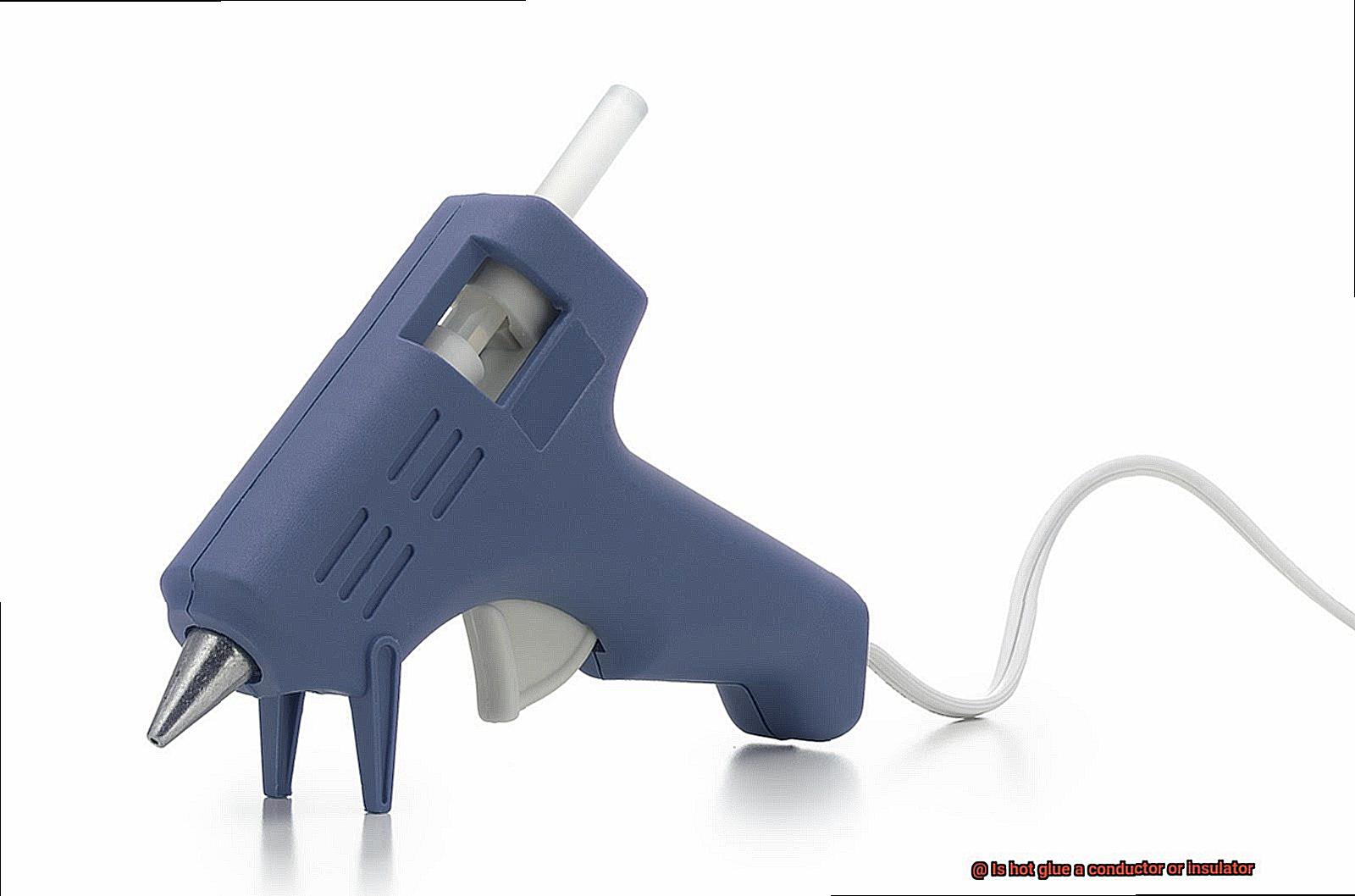
In scenario two, envision yourself utilizing a specialized hot glue infused with conductive additives to construct a circuit. With meticulous precision, you apply the molten hot glue between two wires, forging a connection that permits the passage of electricity. The conductive additives within the hot glue empower its molten state to act as a conductor, thereby completing the circuit.
Factors that Affect Conductivity of Molten Hot Glue
In this blog post, we will delve into the factors that affect the conductivity of molten hot glue. Whether you’re a DIY enthusiast or a curious learner, understanding these factors will unlock the full potential of this versatile adhesive in electrical applications. So, let’s dive in and unravel the secrets behind hot glue’s electrical conductivity.
Temperature:
Hot glue’s conductivity thrives on heat. As we raise the temperature, the glue becomes more electrically conductive. This is because higher temperatures increase molecular mobility, allowing electric charge to flow with ease. Remember, when it comes to conductivity, hotter is better.
Composition:
The composition of hot glue is a critical factor in its conductivity. Some additives or conductive materials can enhance its conductivity, while others may act as insulators, hindering the flow of electric charge. Choosing the right type of hot glue for your specific application is crucial for achieving optimal conductivity.
Moisture Content:
Moisture can significantly impact the conductivity of hot glue. While water conducts electricity, excessive moisture content can compromise the adhesive properties and even cause breakdowns in the glue. Maintaining a delicate balance ensures both conductivity and adhesive performance.
Impurities:
Cleanliness is key. Impurities such as dust particles or contaminants disrupt the flow of electric charge through hot glue, reducing its conductivity. Always opt for pure and clean hot glue when working with electrical applications.
Thickness:
The thickness of the hot glue layer affects its conductivity. Thicker layers offer more resistance to electric current flow compared to thinner layers. To maximize conductivity, consider using thinner layers that provide a smoother path for electric charge.
Surface Area:
A larger surface area of hot glue allows for greater contact with other conductive materials, enhancing electrical conduction. Spread it wide and embrace the power of connectivity.
Pressure:
The pressure applied during hot glue application can impact conductivity. Higher pressure ensures better contact between the glue and conductive materials, enabling improved electrical conduction. Don’t be afraid to apply some pressure when needed.
Electrical Field:
The presence of an external electrical field can influence hot glue’s conductivity. Under an electric field, charged particles within the glue may align and facilitate the flow of electricity. However, the effect of an external electrical field on hot glue conductivity depends on its composition and other factors.
Is Hot Glue Suitable for Conducting Electricity?
When it comes to conducting electricity, hot glue falls short of being a superstar.
Hot glue is primarily composed of synthetic polymers like ethylene-vinyl acetate (EVA) or polyamide, which are notorious for their high resistance to electrical current. These materials simply don’t like to let electrons flow freely, making hot glue an insulator rather than a conductor.
One major obstacle that prevents hot glue from conducting electricity is its high melting point. When heated, hot glue becomes soft and malleable, allowing for easy application. However, this also means that it can melt under high temperatures or electrical current. And that spells trouble for electrical circuits.
Additionally, hot glue has a relatively low thermal conductivity, meaning it doesn’t efficiently transfer heat. Since electrical currents generate heat, a good conductor should be able to dissipate this heat effectively. Unfortunately, hot glue doesn’t quite make the cut in this department.
But before you give up entirely, there are specialized types of hot glue formulated for electrical applications. These conductive glues contain additives like metal particles or carbon fibers that enhance their electrical conductivity. They’re designed to bond electronic components and repair circuit boards. However, they’re not as commonly used as regular hot glue and may come with specific limitations or requirements.
So there you have it. While hot glue excels in many areas, conducting electricity isn’t its forte. If you need to connect electrical components or repair circuits, it’s best to explore alternative materials or consider specific conductive hot glues.
The Purpose of Hot Glue
Hot glue, also known as hot melt adhesive, is a fascinating and essential tool for anyone who loves crafting, DIY projects, or even industrial applications. Its purpose is to provide a strong and durable bond between various materials, making it an indispensable adhesive for countless projects. In this article, we will explore the versatility and benefits of hot glue, its wide range of uses, and why it has become a favorite among crafters and professionals alike.
Versatility:
Hot glue’s versatility is one of its greatest assets. It can bond materials such as wood, fabric, plastic, metal, and even glass. This eliminates the need for multiple adhesives and simplifies the project. Whether you’re working on an intricate craft project or conducting a quick repair job around the house, hot glue can handle it all.
Quick Bonding:
One of the main purposes of hot glue is its ability to quickly bond materials together. When heated, the glue melts into a liquid form that easily fills gaps and crevices, ensuring a precise application. Once cooled down, it solidifies rapidly, creating a strong bond that holds materials securely in place.
Fast Drying Time:
Unlike other adhesives that may take hours or days to fully cure, hot glue sets within minutes. This means less waiting time and faster project completion. With hot glue, you can move on to the next step of your project without delay.
Flexibility:
Hot glue offers a certain level of flexibility once it has hardened. It can withstand some degree of movement or stress without cracking or breaking. This makes it an excellent choice for bonding materials that may experience bending or flexing.
Reversibility:
Although not as easy to remove as some other adhesives, hot glue can be softened and reactivated with heat. This feature allows for the separation of glued materials when necessary, with caution exercised to avoid damaging the materials.
Wide Range of Uses:
Hot glue’s purpose extends beyond just crafts and DIY projects. It is widely used in industries such as packaging, electronics, construction, and woodworking. From sealing boxes to securing wires and cables, hot glue provides a reliable and efficient solution.
Cost-effective:
Hot glue is an affordable adhesive option. It comes in various forms, from glue sticks to pellets, allowing users to choose the most suitable option for their needs. Additionally, hot glue guns are relatively inexpensive and widely available, making it an accessible choice for both professionals and hobbyists.
-BZAA7Y9lNQ” >
Also Read: Can You Super Glue Electrical Wires?
Conclusion
In conclusion, hot glue is an insulator.
It does not conduct electricity due to its high resistance to the flow of electrons. This makes it a safe and reliable option for various craft and DIY projects where electrical conductivity is not desired.
Its ability to insulate and bond materials together makes it a versatile tool in the hands of creative individuals.



